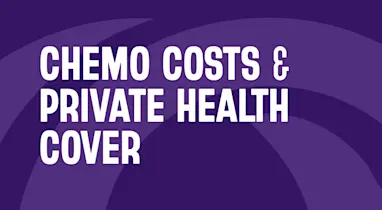less than
2 mins
Low Income Health Care Card Threshold
As the benefits of private health insurance become more abundant and awareness of those benefits increases, more and more Australians are opting to invest in various types of private health cover.
Currently, more than half of the population is covered by private health insurance to some degree.
However, while some people may see the value in private health insurance, they might feel premiums are simply unaffordable, given hospital cover in Australia may cost well over $100 a month for a family.
And experts believe that those numbers will continue to increase.
While the costs may seem daunting, there are options for families that may be having issues covering the cost of private health insurance.
One such option may be the Low Income Health Care Card.
Key Points
The Low Income Health Care Card helps people with lower incomes pay for a range of health-related costs.
To qualify for the Low Income Health Care Card, applicants must meet specific income and residency requirements.
After receiving the card, recipients must remain within the set income thresholds and must continue to meet residency requirements for the card to remain valid.
What is the Low Income Health Care Card?
It is a concession card that is issued by the Department of Human Services.
The card is used to get cheaper health care.
Its carriers are also eligible for other health-related discounts and subsidies.
Generally, it is designated for those who meet specific income criteria and restraints.
Learn more about health insurance with these guides
Low Income Health Care Card eligibility
There are two basic eligibility sets that you must meet to qualify which are: Income Test Limits and Residence Rules.
Income test limits
To be eligible, you must meet the standards of the income test.
You don't need to pass an assets test.
The test is very straightforward.
The Department of Human Services will assess your gross income for the 8 weeks prior to you submitting your card application/claim to determine your average weekly income and total income for that period.
The limits for the income test depend on your family status. See the chart below for more information.
Low Income Supplement Requirements
$30,000 | if you are not a member of a couple and do not have a dependent child, at the time of claiming or |
$45,000 | you are a member of a couple at the time of claiming, and neither you nor your partner have a dependent child at the time of claiming, or |
$60,000 | if you have a dependent child at the time of claiming, or |
$65,000 | if you are a member of a couple and either you or your partner have a dependent child at the time of claiming |
The Department of Human Services will assess several different potential income streams in determining your 8-week income.
Those income streams are as follows:
Employment income
Wages
Salary
Self-employment Income
Employer-provided fringe benefits
Rental income
Reportable super contributions
Centrelink pensions and benefits
Department of Veterans' Affairs payments
Financial investment income
Foreign income
Insurance compensation
New Enterprise Incentive Scheme
Paid Parental Leave payments
Other lump sum payments
Residence rules
To be eligible for the Low Income Health Care Card, you must meet several residency requirements.
They are as follows:
Must be in Australia on the day you apply
Must be living in Australia
Must possess one of the following for at least 104 weeks before receiving the card:
Citizenship
Permanent Visa
Partner Provisional visa subclass
Temporary Protection visa
There are exemptions from the 104-week residency requirement.
If you meet one of the following criteria, you will likely be eligible for an exemption:
Are an Australian citizen
Arrived in Australia as a refugee
Hold one of the following visa sub-classes:
Subclass 852 -- referred stay
Subclass 104 -- preferential family
Subclass 116 -- carer
Subclass 806 -- family
Subclass 836 -- carer
Subclass 060 -- bridging visa F
Subclass 070 -- bridging
Subclass 449 -- humanitarian stay
Subclass 785 -- temporary protection
Subclass 786 -- temporary
Subclass 790 -- safe haven enterprise
You have a change of circumstance and are experiencing hardships beyond your control
Claiming for a Low Income Health Care Card
Applying for a Low Income Health Care Card is simple.
You can apply online or via post.
Before applying, you should:
Make sure you are eligible
Read the resource on this page
Set up a Centrelink account
Be prepared to confirm your identity
Online
To register online, fill out the required documents through myGov.
Post
If you cannot access the forms through myGov, you can print them here.
You can also pick up the necessary forms from a service centre near you.
Or, you can call 132 490 and a representative will have the forms mailed to your home.
After completing the forms, you can physically bring them to your local service centre or mail them to:
Centrelink Reply Paid 7800 Canberra BC ACT 2610
Using and renewing your card
You will receive your card in the mail after it is approved.
As long as you maintain eligibility, Centrelink will send you a renewal card before your Low Income Health Care Card expires.
To renew, you must re-qualify based on the income and residency requirements.
If your income or residency circumstances change while you are in possession of the Low Income Health Care Card, you must inform Centrelink immediately.
What is a Centrelink Health Care Card?
The Centrelink Health Care Card is a concession card that allows the holders to receive cheaper medical services and prescription medications.
It's designed to give low-income Australians access to subsidised Medicare benefits.
Eligible individuals will receive the health care card automatically, so there is no need to fill out a Low Income Healthcare card form.
There is also no Low Income Healthcare card application form online to worry about, either.
The same goes for card renewal. You will receive your card in the mail if you remain eligible from year to year.
You'll be able to automatically receive the Health Care Card if you're receiving the maximum rate of the Family Tax Benefit Part A along with a few other benefits.
You'll also get a card for one year if you receive any of the following payments:
ABSTUDY living allowance
Austudy
Newstart Allowance
Partner Allowance
Parenting Payment partnered
Sickness Allowance
Special Benefit
Widow Allowance
Youth Allowance
The same applies if you get the Carer Allowance benefit for those care for a child under the age of 16.
This card will be for any child healthcare services they need to receive.
If you receive a Sickness Allowance, then you will be able to receive a valid card for the term limit -- up to 13 weeks.
Children in your care will automatically share your Health Care Card.
You must care for the child for a specified amount of time, which will determine the percentage of the card's benefits they'll receive.
There are several different concession cards available.
You might qualify for another low-income benefit if you don't qualify for the Centrelink Health Care Card.
What is the low income supplement?
There are quite a few government programs outside of the Low Income Health Care Card that assist low-income households in paying their bills.
One of them is the Low Income Supplement.
This program offers an annual payment of $300 to assist with household expenses.
This benefit comes in two different forms: the Low Income Family Supplement and the Single Income Family Supplement.
Here are the requirements that you need to meet to receive the Low Income Supplement:
Status | Weekly | Income in an 8 week period |
|---|---|---|
Single, no children | $571.00 | $4,568.00 |
Couple combined, no children | $985.00 | $7,880.00 |
Single, 1 dependent child | $985.00 | $7,880.00 |
Couple combined, 1 child | $1,019.00 | $8,152.00 |
For each extra child, add | $34.00 | $272.00 |
The Single Income Family Supplement (SIFS) requirements are a bit different.
You need to fit all of the following criteria:
Were eligible on 30 June 2017 and have been eligible since
Have a single main income earner in the family
Have a taxable income between $68,000 and $150,000
Receive the Family Tax Benefit for one or more children.
If there is a second earner in your family, their taxable income must be less than $18,000 per year to remain eligible for the Single Income Family Supplement.
Eligibility requirements have also remained unchanged since 2017.
Changes that will affect your supplement eligibility include:
If you no longer care for your eligible child
If you and your child leave Australia for more than 6 weeks at a time
If your income is too high
If you don't file a tax return on time
If you don't submit a claim on time
If you care for your child less than 35% of the time.
What's new in health insurance - Jun 2025
Biggest hike in years: Health insurance premiums rose by 3.73% on April 1 — the largest hike since 2018 and noticeably higher than last year’s increase of 3.03% (in 2024).
Most Aussies face higher hikes: Compare Club’s data suggests that due to the five largest funds holding nearly 80% of the market, the average increase for the majority of policyholders is closer to 4.25%.
Review your policy: Now’s the time to check if your policy still fits—better deals could be available.
Related Articles
The Family Health Insurance Hack That Stacks Up The Savings
Bridging Visa Health Insurance Comparison
COMPARE & SAVEThings You Should Know
*As our customer you'll be provided with quotes directly from the insurer for the product you intend to purchase. We manage the application and deal with the administration work and insurer. We do not charge you a fee for the service we provide, the insurer simply remunerates us in return for setting up your policy. The financial and insurance products compared on this website do not necessarily compare all features that may be relevant to you. Comparisons are made on the basis of price only and different products may have different features and different levels of coverage. Compare Club does not compare all policies available in Australia and our partner insurers may not make all policies available to Compare Club.
This guide is opinion only and should not be taken as medical or financial advice. Check with a financial/medical professional before making any decisions.
Chris Stanley is the sales & operations manager of health insurance at Compare Club. With extensive experience and expertise, Chris is a trusted leader known for his deep understanding of health insurance markets, policies, and coverage options. As the sales & operations manager of health insurance, Chris leads a team of dedicated professionals committed to helping individuals and families make informed decisions about their health insurance needs.

Meet our health insurance expert, Chris Stanley
Chris's top health insurance tips:
- 1
Australia’s public health system is world-class, but wait times for public hospitals can be long, inconvenient - and leave you living in constant pain while you wait.
- 2
An appropriate private health insurance policy can speed up your surgery, relieving your pain sooner.
- 3
Family health cover means your children are covered under the same policy as you.
- 4
Many health insurance policies come with a 12-month waiting period for pregnancy-related cover, so it’s a good idea to get a family policy organized well before starting your family. This means your child will be covered from birth until at least their early twenties (depending on which health fund you select).




